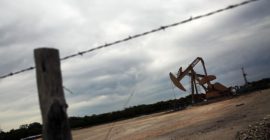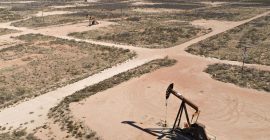It’s rumored that the gasps in the audience were clearly audible at the auction of Mexico’s oil blocks a month ago as Royal Dutch Shell’s hefty bids were announced one by one. Shell’s cash payments of $343 million, out of the total of $525 million that Mexico earned in the sale, guaranteed that the company swept up nine of the 19 offshore blocks.
Six months earlier, its drilling rig had struck a giant oil reservoir, the Whale well, in the U.S. side of the Gulf of Mexico – just across the border from many of the Mexican blocks, which share a similar Paleogene-age geology.
“Post the Whale discovery we had some geological insights. It is not by accident we didn’t announce it until the day of the bid,” Andy Brown, Shell’s head of oil and gas production, told Reuters. “The nine blocks give us significant potential.”
It’s worth noting that Shell, or any other explorers, are not legally obliged to publicly disclose a discovery. The fact that its first major exploration success in over 10 years came adjacent to blocks coming up for auction was a matter of good fortune.
Shell did not yet released any estimates for the Whale’s recoverable resources, but two industry sources close to the exploration project put the figure at up to 700 million barrels of oil. That equates to about half of Shell’s 2017 oil production and would make the reservoir one of the biggest discoveries of the past decade in the industry. But, even though a similar geology might increase the chances of similar exploration success, there are no guarantees.
The Reuters article (link below) also goes into some great analysis on how this discovery may impact their Shells oil reserves.
Published in Discoveries, Industry News, Offshore

























